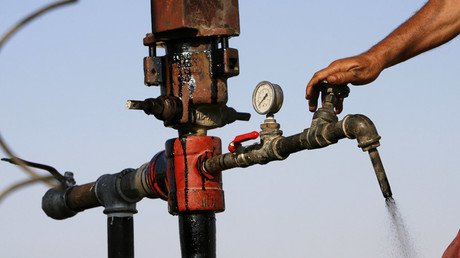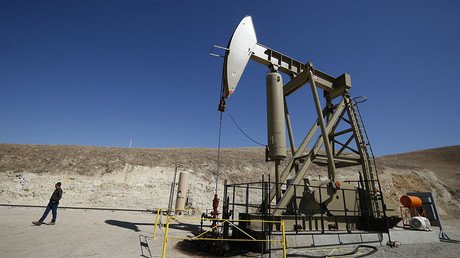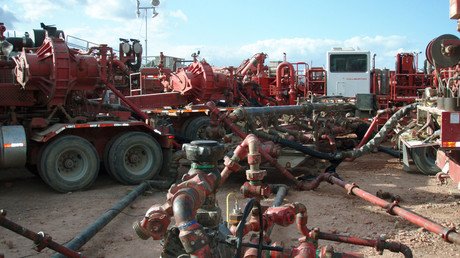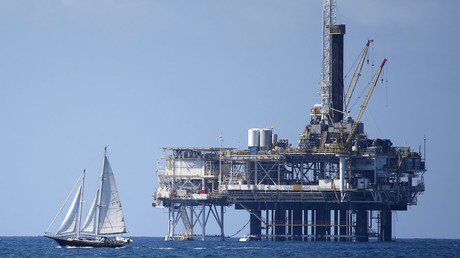'Virtually unregulated': Radioactive fracking-waste rules in the US slammed in report
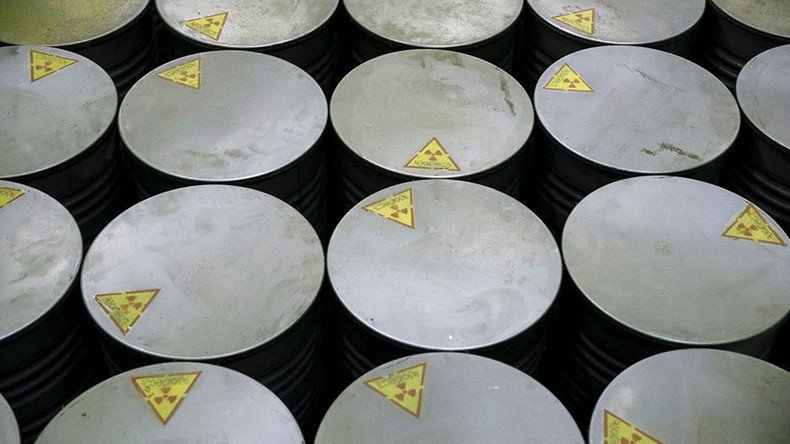
States involved in the fracking boom employ a patchwork of laws to deal with radioactive drilling waste, according to a new report. The US government does not fully regulate disposal, and industry is largely left to self-regulate.
The Marcellus Shale in the Appalachian Basin is the center of heightened hydraulic fracturing, or fracking, activity in the US. States along the Marcellus include Ohio, Pennsylvania, West Virginia, and New York.
These four states handle many tons of radioactive fracking byproduct in a variety of ways, according to a new report by the Center for Public Integrity (CPI), and there is no federal agency that fully regulates drilling waste.
Thus, energy companies and their interests end up taking control in the race to attract more drilling business in the region, experts told CPI.
“Nobody can say how much of any type of waste is being produced, what it is, and where it’s ending up,” said Nadia Steinzor of the group Earthworks, which is involved in a lawsuit that seeks to compel the US Environmental Protection Agency to take a larger role in tracking and regulating hazardous drilling waste.
In order to unleash oil or natural gas, the fracking process requires injecting large amounts of highly pressurized water, sand, and chemicals into layers of rock. Fracking is billed as a new frontier in the search for cheap energy in North America, but it has also come under heavy scrutiny for potential negative impacts, such as groundwater contamination and upticks in earthquake activity, among other concerns.
What to do with "hot" radioactive fracking waste has been a struggle for Marcellus states, CPI reported, resulting in a permissive culture where state regulators are slow at attempting to understand the risks involved with waste exposure while energy industry players make the important decisions about reporting and policing waste disposal.
“There’s been such a push to expand the industry and to drill as much as possible,” said Steinzor. “No one has had the desire or political will to slow the industry down long enough to figure out what the risks truly are.”
The patchwork of rules have led those concerned about waste disposal to warn about radioactive byproduct being "shopped around" or illegally dumped by companies handling it.
Radioactive drilling waste is "virtually unregulated," said Bill Kennedy, a radiation expert and co-chair of the National Council on Radiation Protection and Measurements, which seeks tightened rules for disposal. “You can’t rely on industry to go it alone and self-regulate,” he added.
Fracking's effects brought to light in Marcellus Shale Documentary Project: An Expanded View https://t.co/ELDrxEmzKDpic.twitter.com/WdEuAsxjLm
— NEXTpittsburgh (@NEXTpittsburgh) June 18, 2016
In West Virginia, the state has allowed some landfills to accept unlimited amounts of radioactive waste. In 2015, the state required landfills to have radiation monitors and to submit reports of heightened radiation levels to state regulators, but the 70 or so reports filed with the state fail to include any real information, such as radium amounts or whether waste was ultimately accepted or not, CPI reported.
In Pennsylvania, momentum to form state rules governing waste disposal has slowed since efforts began earlier this decade. Regulators have reported inconsistencies in how state landfills accepted radioactive waste.
“We need a statewide guidance on the handling, sampling and protocol and we need it yesterday not a year from now,” a state employee wrote in a 2012 email.
Any concerns, however, were not included in the state Department of Environmental Protection Agency's 2015 report on fracking, which found “little potential for harm to workers or the public from radiation exposure due to oil and gas development.”
Since 2014, Ohio has allowed more than 40 landfill facilities to handle drilling byproduct through a temporary authorization process that falls short of an official, more restrictive permit process that requires public notice.
Rules governing radioactive waste disposal have stalled in recent years, resulting in a "Wild West" atmosphere, according to Melanie Houston of the Ohio Environmental Council, a environmental-advocacy nonprofit group.
In New York, where fracking operations were banned in 2015, thousands of tons of fracking waste were delivered to state landfills, according to Environmental Advocates of New York, triggering proposed regulations on radioactive waste dumping in the state. The group found that, based on industry's own, likely incomplete, reporting, the state accepted at least 460,000 tons of solid fracking waste since 2010.
Good news.
— Tim Ream (@ourcarbon) June 14, 2016
EPA will ban sending #fracking wastewater to public treatment facilities.
Here are the wonky details.https://t.co/78BFXaIUBK …
Last week, in a nod to the radioactive potential of fracking waste, the US EPA banned fracking wastewater from public sewage plants.
